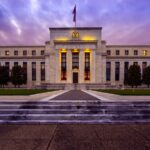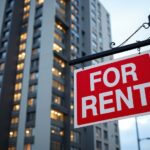In January, the seasonally adjusted annual rate of privately owned dwelling units permitted by building permits was 1,483,000. This is 1.7 percent lower than the January 2024 rate of 1,508,000. It is however 0.1% higher than the revised December rate of 1,482,000.
The rate of single-family authorizations in January was 996,000, which is essentially the same as the updated December number of 996,000. In January, 427,000 units were authorized in structures with five or more units.
In January, the seasonally adjusted annual rate of starts for privately owned housing was 1,366,000. This is 0.7 percent (+13.0 percent) lower than the January 2024 rate of 1,376,000 and 9.8% (+12.5%) lower than the updated December projection of 1,515,000. In January, the rate of single-family dwelling starts was 993,000, which is 8.4 percent (±10.1 percent) lower than the updated December number of 1,084,000. Units in buildings with five or more units had a January rate of 355,000.
In January, the seasonally adjusted annual rate of completions of privately owned housing was 1,651,000. This is 9.8% (±14.%)* higher than the January 2024 rate of 1,504,000 and 7.6 percent (±8.4%) higher than the updated December percentage), and higher than the revised rate of 917,000 in December. Units in buildings with five or more units had a January rate of 652,000.
Commentary from the accredited Odeta Kushi:
January Housing Starts – Slump in housing starts due to variety factors as builder sentiment nose dives
- “A colder than usual January, mortgage rates crossing the 7 percent threshold in January, and builder pessimism reflecting lingering supply-side and affordability headwinds combined to drag housing starts down in January.”
- “Permits were flat on a monthly basis reflecting builder concern. Builder sentiment dipped in February to the lowest level since September. Importantly, optimism about single-family sales expectations for the next six months plummeted, dropping 13 points into negative territory. This marks the largest one-month decline since the early months of the COVID-19 pandemic. Apart from the early months of the pandemic, it is the biggest drop in the history of the series, which dates back to 1985.”
- “Some context on today’s single-family housing starts and permits numbers: when smoothing out the series using a 6-month average, we see a bottoming out and beginning of a positive trend. Also important to note that single-family starts remain nearly 20% above the 5-year, pandemic average. Single-family permits are up 24% from that average.”
- “Growing builder pessimism is a headwind to this positive trend and is a function of several factors. While builders are benefitting from a chronic housing shortage made worse by the ‘seller’s strike’ driven by higher mortgage rates, they still must confront lingering supply-side and affordability headwinds. Among the supply-side concerns are higher material costs. Residential building material costs remain approximately 40 percent higher than pre-pandemic, making it more expensive to build.”
- “On the affordability side, with sticky inflation and the market believing that rates will stay ‘higher for longer,’ mortgage rate expectations have drifted higher this year. Higher rates, all else held equal, reduce consumer house-buying power and increase financing costs for builders. Additionally, builders continue to grapple with challenges stemming from the ‘5 Ls’: labor, lots, legal issues, lumber, and lending. Uncertainty regarding tariffs further weighs on builder sentiment.”
- “The new-home market has been a relative bright spot in the housing market. Builders can offer mortgage rate buydowns, making monthly payments more manageable, and offer upgrades on interior quality features. Yet, in the latest builder sentiment report, the use of sales incentives declined from 61 percent in January to 59 percent in February. Incentive use may be declining as a sales strategy as elevated interest rates reduce the pool of eligible home buyers.”
- “The outlook for the new home market is still buoyed by the limited, but growing, inventory of existing homes – many of which are locked up by homeowners reluctant to sell due to elevated mortgage rates. Additionally, market expectations are that the Federal Reserve will ease rates this year, though less aggressively than previously anticipated. Lower borrowing costs could provide some relief, but builders know that higher-for-longer mortgage rates will keep buyers cautious.”
To read the full report, click here.
.








